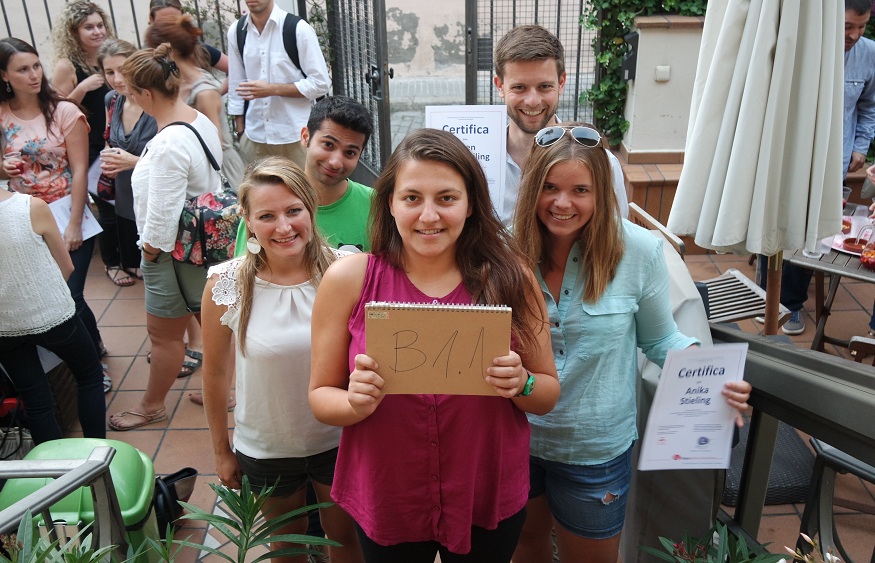Presentation of the Common European Framework of Reference for Languages: Learning, Teaching, Assessment (CERCL) and its complementary volume.
The Common European Framework of Reference for Languages (CEFRL) is the result of several years of linguistic research carried out by experts from the member states of the Council of Europe .
Published in 2001, it constitutes a completely new approach which aims to rethink the objectives and methods of language teaching and, above all, it provides a common basis for the design of programmes, degrees and certificates . In this sense, it is likely to promote educational and professional mobility.

It is neither a manual nor a language repository.
The framework is a tool designed to meet the general objective of the Council of Europe which is to “achieve greater unity among its members” and to achieve this to establish European stability by fighting against “xenophobia” and ensuring the proper functioning of democracy. Languages and cultures can contribute to this through better knowledge of others.
We go from a logic of almost total mastery of one or more languages to a logic of interaction between different languages , whatever the level of mastery of the latter.
The global language proficiency scale shows three general levels subdivided into six common levels (in the sense of broad consensus):
These levels mark out the learning of foreign languages. C2 should not be confused with native speaker language proficiency. This is beyond and can therefore no longer constitute the ideal model on the basis of which students’ language skills are assessed.
The European Framework, thanks to the descriptors of competences that it presents for each level, makes it possible to establish a solid and objective basis for the reciprocal recognition of language qualifications. The benchmarking it provides enables the development of consistent benchmarks in each language and for each common level of the scale and helps teachers, students, course designers and certification bodies to coordinate their efforts and situate their productions to each other.
These language communication activities may fall under:
The expression language communication activity , borrowed from the terminology used in the text of the Common European Framework of Reference for Languages, is to be understood in the sense usually given to competence: listening comprehension, expression continuous oral, oral interaction, reading comprehension, written expression. Henceforth we will speak of “language communication activity groups” instead of “competence groups”.
The term competence will be used to designate more general components: socio-linguistic, pragmatic or even linguistic competence (the latter including lexicon, grammar and phonology) without forgetting cultural competence (everything that should be known about or of the countries where the language is spoken and of the culture which is specific to them, otherwise communication could not be established correctly, see on this subject the new college programs).
At the end of cycle 4, for modern language 2, pupils must reach level A2 in at least two of the five language activities and level A1 in all the others.
The task is to be linked to the theory of the action-oriented approach of the frame in the sense of achieving something, of accomplishment in terms of actions. In other words, the use of language is not dissociated from the actions performed by the person who is both speaker and social actor. This can range from the most pragmatic (assembling a piece of furniture following instructions) to the most conceptual (writing a book, an argument, making the decision in a negotiation).
In this perspective, linguistic competence can be solicited in full (eg of the book), in part (case of the assembly instructions), or not at all (making a memory dish). Linguistic competence is a type of competence that enters into the realization of tasks.
We could summarize, at this stage, the framework as the sum of levels of mastery of skills ( language or non-language ) entering into the performance of tasks . This approach has an impact on learning and its design because it means classifying language activities and crossing them, prioritizing difficulties and associating what is said with what is done.
The sociolinguistic and pragmatic components are rarely part of school-based learning. We act as if they pre-exist innately but are on the other hand evaluated, therefore without any real training, during interviews or passing of exams or competitions (the pragmatic component in particular).
To communicate is to use a linguistic code (linguistic competence) related to an action (pragmatic competence) in a given socio-cultural and linguistic context (socio-linguistic competence).
The framework is to be dissociated from the European language portfolio (available in three versions: school, college, young people and adults). It is important to underline this because there is often confusion between the two. The portfolio is a self-assessment (or even co-assessment) tool backed by the framework.






Leave a Reply
You must be logged in to post a comment.